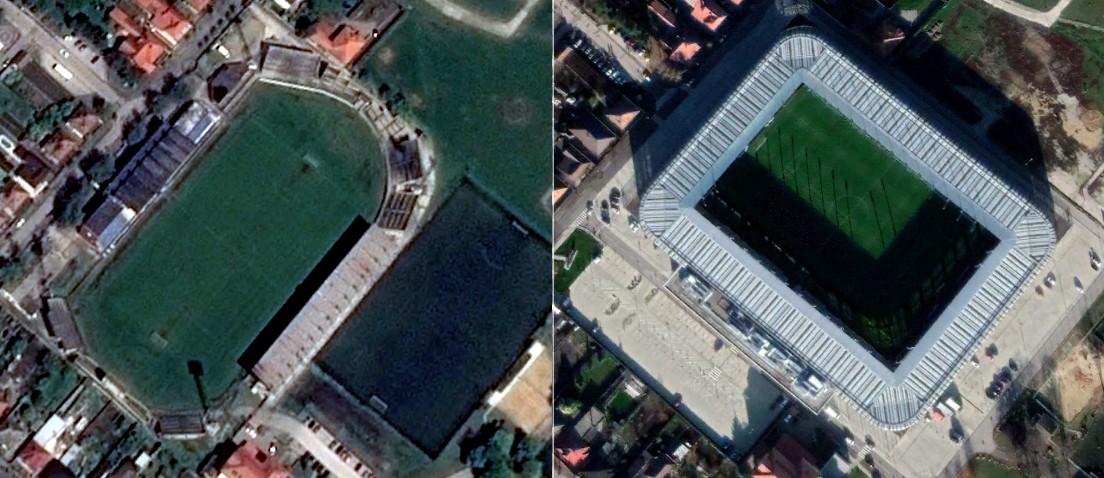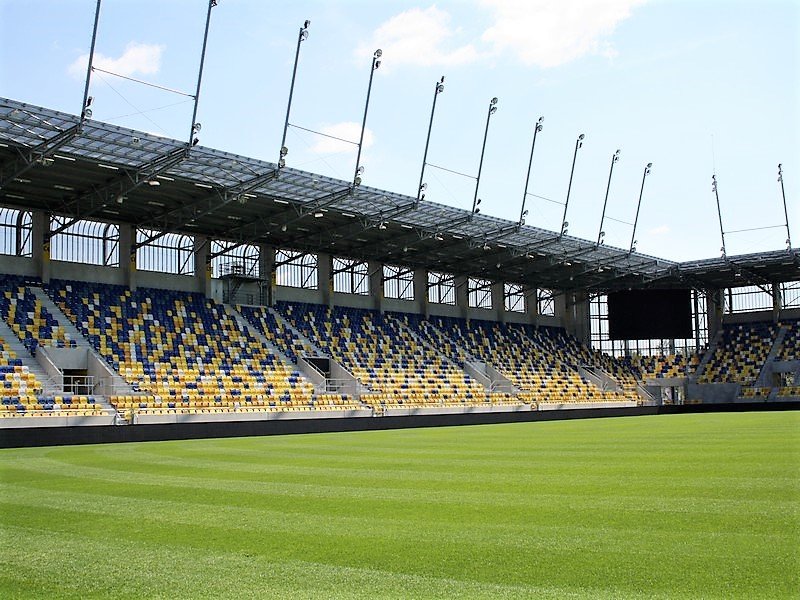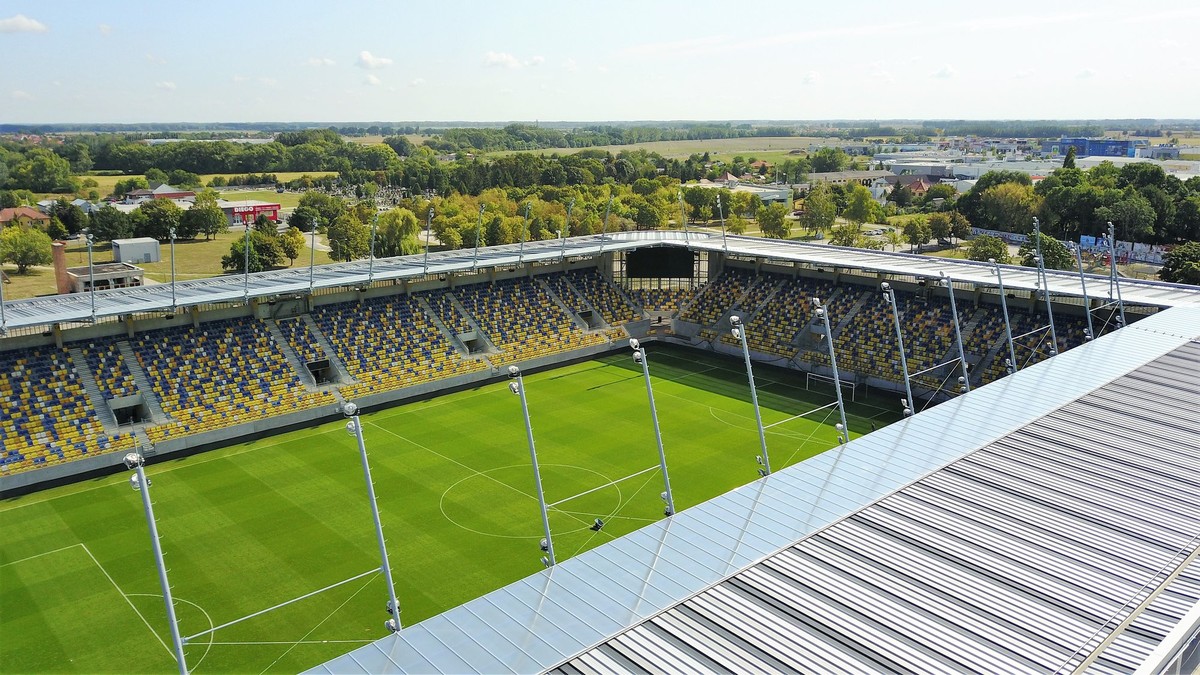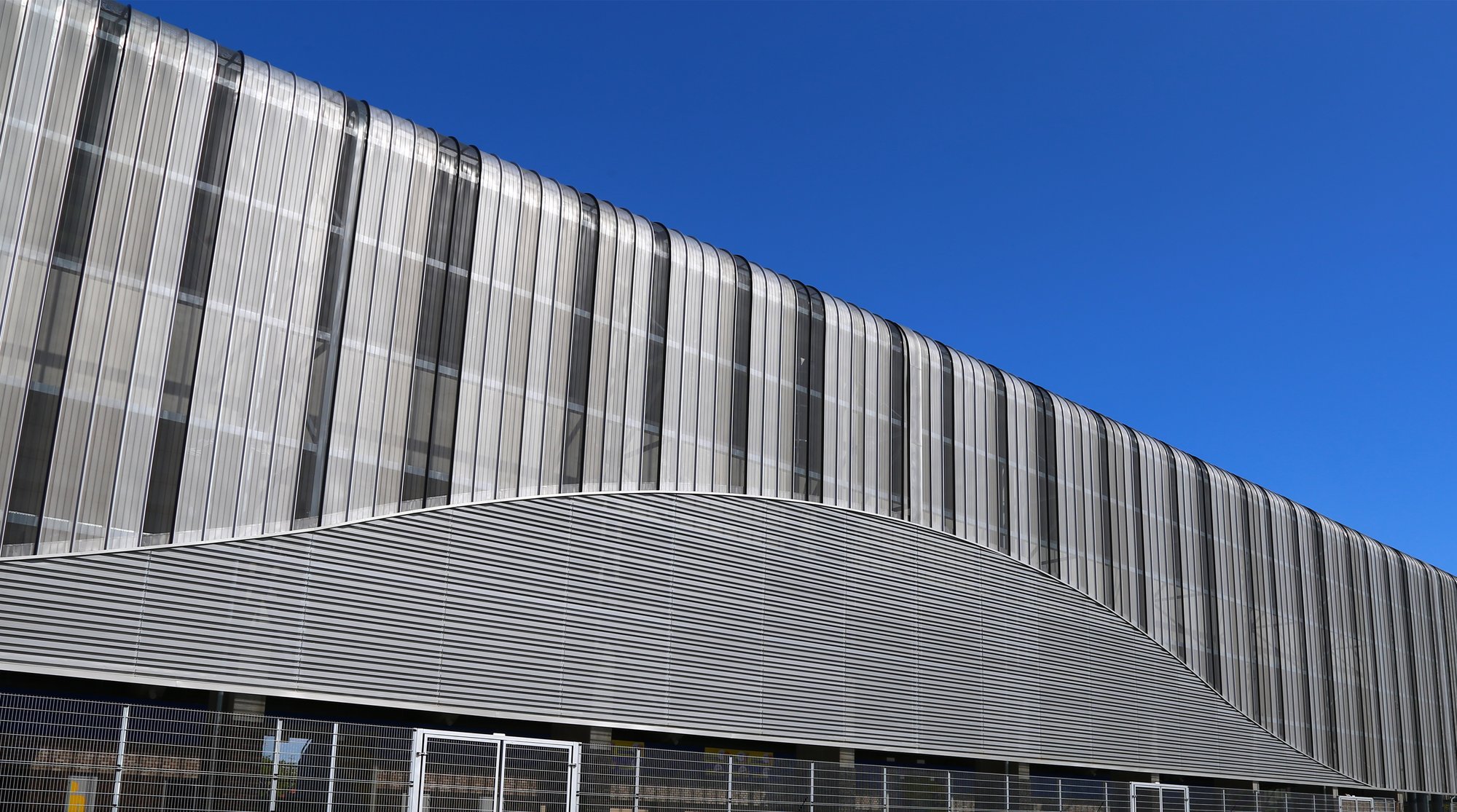New stadium: MOL Aréna in Dunajska Streda
source: StadiumDB.com; author: michał
 Section by section, stand by stand a very robust, compact stadium was delivered for Slovakia's most Hungarian top flight club. No wonder, Hungarian designed it, Hungarians were building and co-financing it.
Section by section, stand by stand a very robust, compact stadium was delivered for Slovakia's most Hungarian top flight club. No wonder, Hungarian designed it, Hungarians were building and co-financing it.
Advertisement
The historical stadium in Dunajska Streda was built back in 1953 and saw its biggest transformation in 1980s. By 1991 it reached peak capacity of 16,400, a size never repeated. Just a couple years earlier it saw one of rather few games with over 10,000 fans, when over 15,000 came to watch FC DAC fight against Bayern. While it was one of Slovakia's most important stadiums on the turn of the century, it was severely dated by early 2000s.
DAC's aspirations were much higher and an opening was created thanks to local circumstances. Oszkár Világi became the team's majority shareholder. He was also the chairman of Slovnaft, which in turn is owned by Hungary's oil company MOL. Hungaian government decided to use its subsidiaries to boost football in areas with strong Hungarian diaspora, thus the readines to invest in Dunajska Streda. Or Dunaszerdahely, as Hungarians call it.
In 2014 the financial model was created, along which the city contributed land worth €2 million, the Slovak government added €2.4 million, MOL itself donated €2 million and the club secured loan to cover €4.6 million. This was enough for phase one, which cost €11 million. Eventually the stadium consumed twice the amount.
Local architect Ambrus Csaba was tasked with designing the stadium. He created three studies on the potential venue, all oscilating around 13,000 seats. Two strongly utilised team colours across the structure, one was more neutral and that was the final one. Instead of overwhelming blue and yellow elements the simple inspiration of barcode was used to create an interesting vertical layout.
Thin strips of polycarbonate were installed next to one-another to create the pattern, resulting in both the facades and roof being striped. The form is disrupted only in lower central sections, where horizontal blinds were created to add dynamism. In total 15,000 m2 of polycarbonate was used throughout the stadium – a lot for a venue with a footprint of just over 20,000 m2.
Transition from old to new stadium was carried out in an interesting manner because the old main stand 'landed' behind goal once the field was rotated and moved to the south. This way games were still possible, while new stands could be built on remaining sides.

First two phases, that is east+south and then west stand were all delivered in under a year thanks to prefabrication of nearly all of the stadium. The fourth stand was divided into two further phases, delivering first the away section and then – after demolition of the old grandstand – the stadium was entirely enclosed by January of 2019.
The outcome is a very compact, robust stadium, just 160 meters long and 130m wide, with stands just 18 meters deep. The main stand received 13 boxes (12-20 seats each) and an open business section, as well as 175 press seats.
 © AVA Stav
© AVA Stav
Advertisement
 StadiumDB
StadiumDB ©
©  ©
©